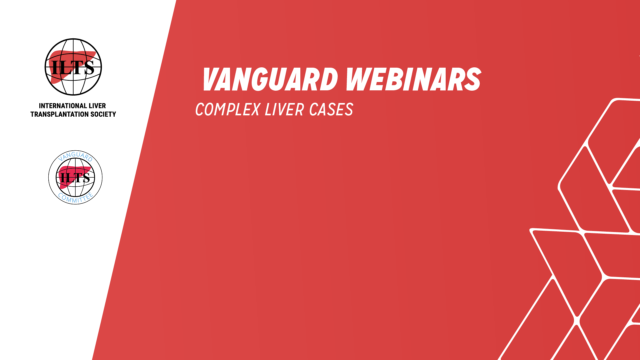What we´re reading… February 2023
The February issue of Transplantation, the official Journal of ILTS and the Transplantation Society, is out now.
A must-read for anyone working in the field of liver transplantation.
Article selections by Ryan Chadha, Abdul Rahman Hakeem, Felipe Alconchel, Onur Keskin.
HEPATOLOGY
Transplantation
Induction Immunosuppression Does Not Worsen Tumor Recurrence After Liver Transplantation for Hepatocellular Carcinoma
Background: Prior studies are inconsistent regarding the impact of antibody induction therapy on outcomes after liver transplantation (LT) for hepatocellular carcinoma (HCC). More
Lancet Gastroenterology and Hepatology
Sequential transarterial chemoembolisation and stereotactic body radiotherapy followed by immunotherapy as conversion therapy for patients with locally advanced, unresectable hepatocellular carcinoma (START-FIT): a single-arm, phase 2 trial
Background: The synergy between locoregional therapies and immune checkpoint inhibitors has not been investigated as conversion therapy for unresectable hepatocellular carcinoma. We aimed to investigate the activity of sequential transarterial chemoembolisation (TACE) and stereotactic body radiotherapy followed by avelumab (an anti-PD-L1 drug) for locally advanced, unresectable hepatocellular carcinoma. More
Gut
Liver stiffness thresholds to predict disease progression and clinical outcomes in bridging fibrosis and cirrhosis
Objective: In retrospective studies, liver stiffness (LS) by vibration-controlled transient elastography (VCTE) is associated with the risk of liver decompensation in patients with non-alcoholic steatohepatitis (NASH), but prospective data in biopsy-confirmed cohorts with advanced fibrosis are limited. We aimed to establish thresholds for LS by VCTE that predict progression to cirrhosis among patients with bridging fibrosis and hepatic decompensation among patients with cirrhosis due to NASH. More
SURGERY
Journal of Hepatology
Alternative forms of portal vein revascularization in liver transplant recipients with complex portal vein thrombosis
Background & aims: Complex portal vein thrombosis (PVT) is a challenge in liver transplantation (LT). Extra-anatomical approaches to portal revascularization, including renoportal (RPA), left gastric vein (LGA), pericholedochal vein (PCA), and cavoportal (CPA) anastomoses, have been described in case reports and series. The RP4LT Collaborative was created to record cases of alternative portal revascularization performed for complex PVT. More
Journal of Hepatology
Utilization of livers donated after circulatory death for transplantation – An international comparison
Background and aim: Liver graft utilization rates are a hot topic due to the worldwide organ shortage and an increasing number of transplant candidates on waiting lists. Liver perfusion techniques have been introduced in several countries, and may help to increase the organ supply, as they potentially allow the assessment of livers before use. More
Annals of Surgery
Auxilliary Liver Transplantation According to the RAPID Procedure in Noncirrhotic Patients: Technical Aspects and Early Outcomes
Objective: To present technical details and short-term experiences of liver transplantation as a 2-stage procedure using small for size grafts in a multicenter cohort study. More
ANESTHESIOLOGY AND CRITICAL CARE
Liver Transplantation
Combined Heart Liver Transplantation Practices Survey in North America: Evaluation and Organ Listing Practices.
Objective: We conducted a web-based survey to characterize liver transplant (LT) evaluation and listing practices for patients being evaluated for CHLT, with a specific emphasis on patients with CHD, around transplant centers in North America. More
Liver Transplantation
Effects of 20% albumin infusion therapy during liver transplantation on plasma neutrophil gelatinase-associated lipocalin level: a randomized controlled trial
The risk of acute kidney injury (AKI) after liver transplantation was lower in patients with serum albumin levels≥3.0 mg/dL during surgery. We tested whether intraoperative infusion of 20% albumin affects neutrophil gelatinase-associated lipocalin (NGAL) level, a reliable indicator of AKI. We randomly assigned 134 patients undergoing liver transplantation into albumin group (n=70, 20% albumin 200 mL) and the control group (n=66, crystalloid solution 200 mL). More
Liver Transplantation
Drug-eluting stent use with abbreviated dual-antiplatelet therapy post percutaneous coronary intervention for liver transplantation evaluation
Guidelines recommend revascularization of obstructive coronary artery disease (CAD) to facilitate transplant candidacy in otherwise appropriate surgical candidates.1 Given the extreme mortality risk associated with coronary artery bypass grafting in patients with decompensated liver cirrhosis, percutaneous coronary intervention (PCI) is the treatment of choice in this population. Bare-metal stents (BMS) have been traditionally preferred in LT candidates to minimize duration of dual antiplatelet therapy (DAPT). With BMS implantation, DAPT cessation is recommended after 4-6 weeks, whereas PCI with drug-eluting stents (DES) typically require continuation of aspirin and P2Y12 inhibitor for 6-12 months to reduce risk of adverse events, particularly stent thrombosis. More







